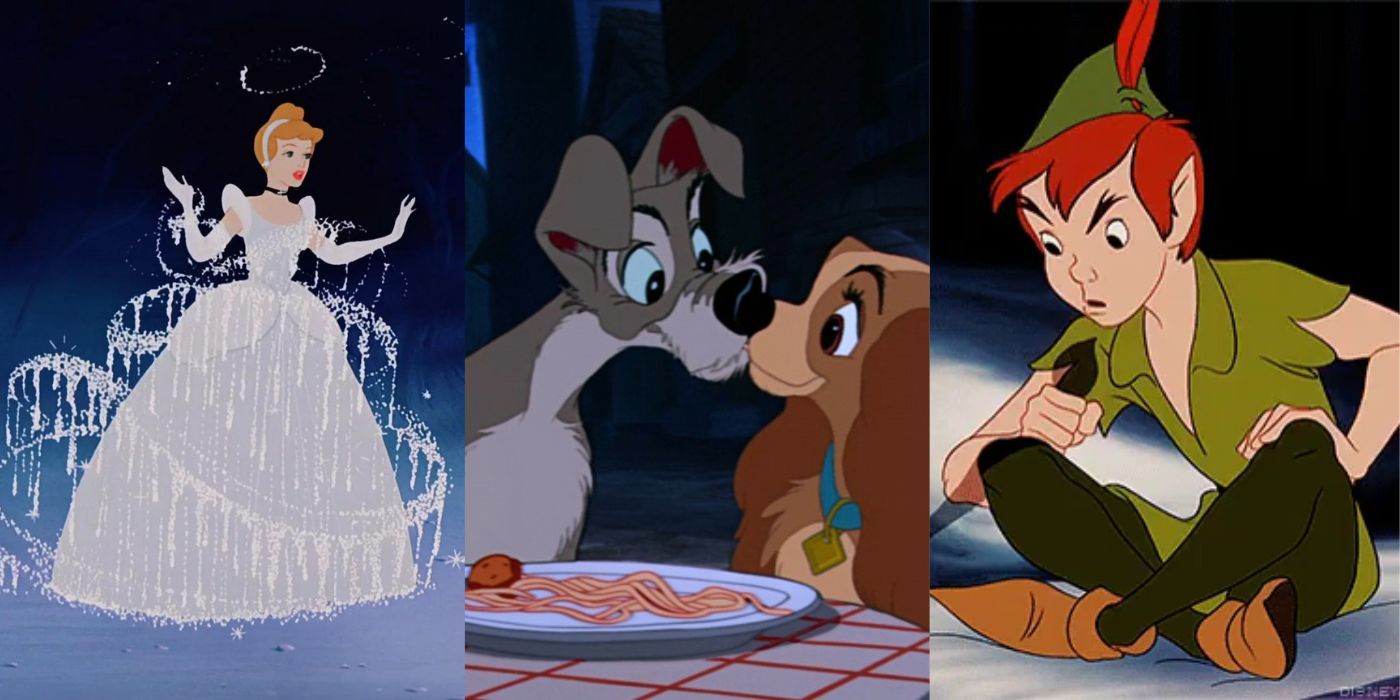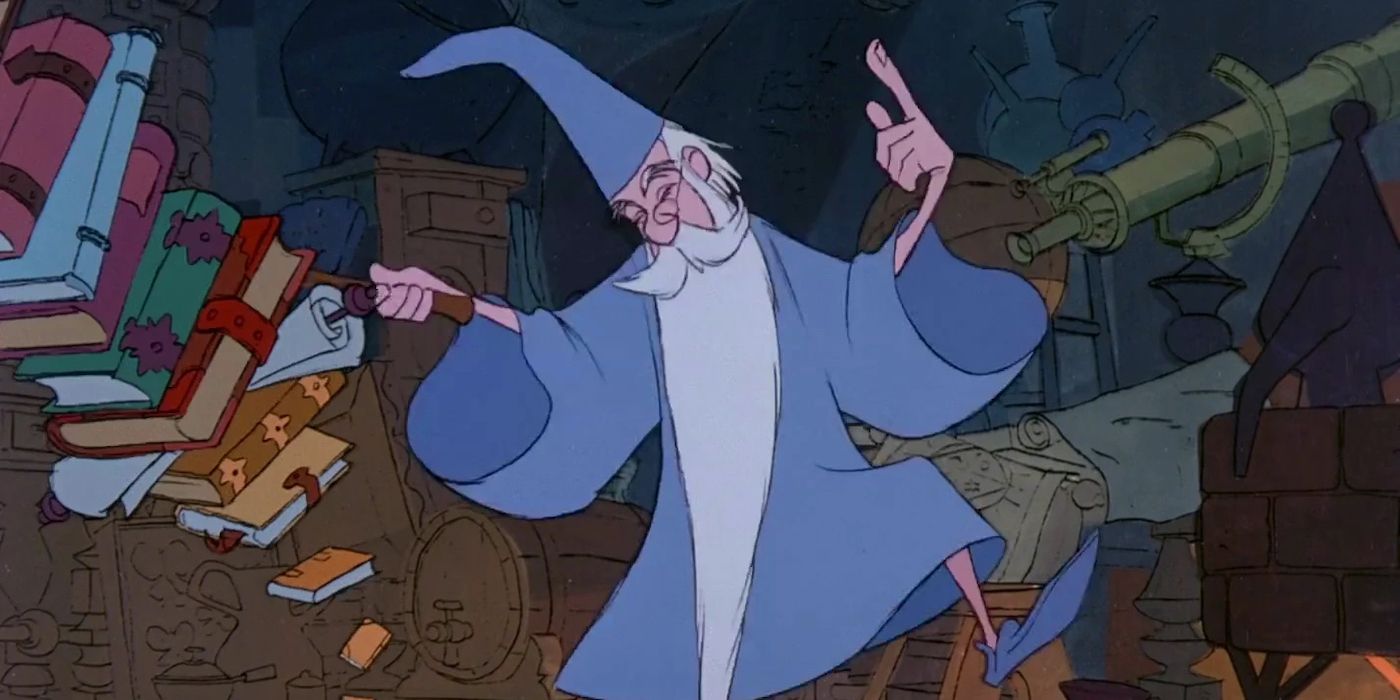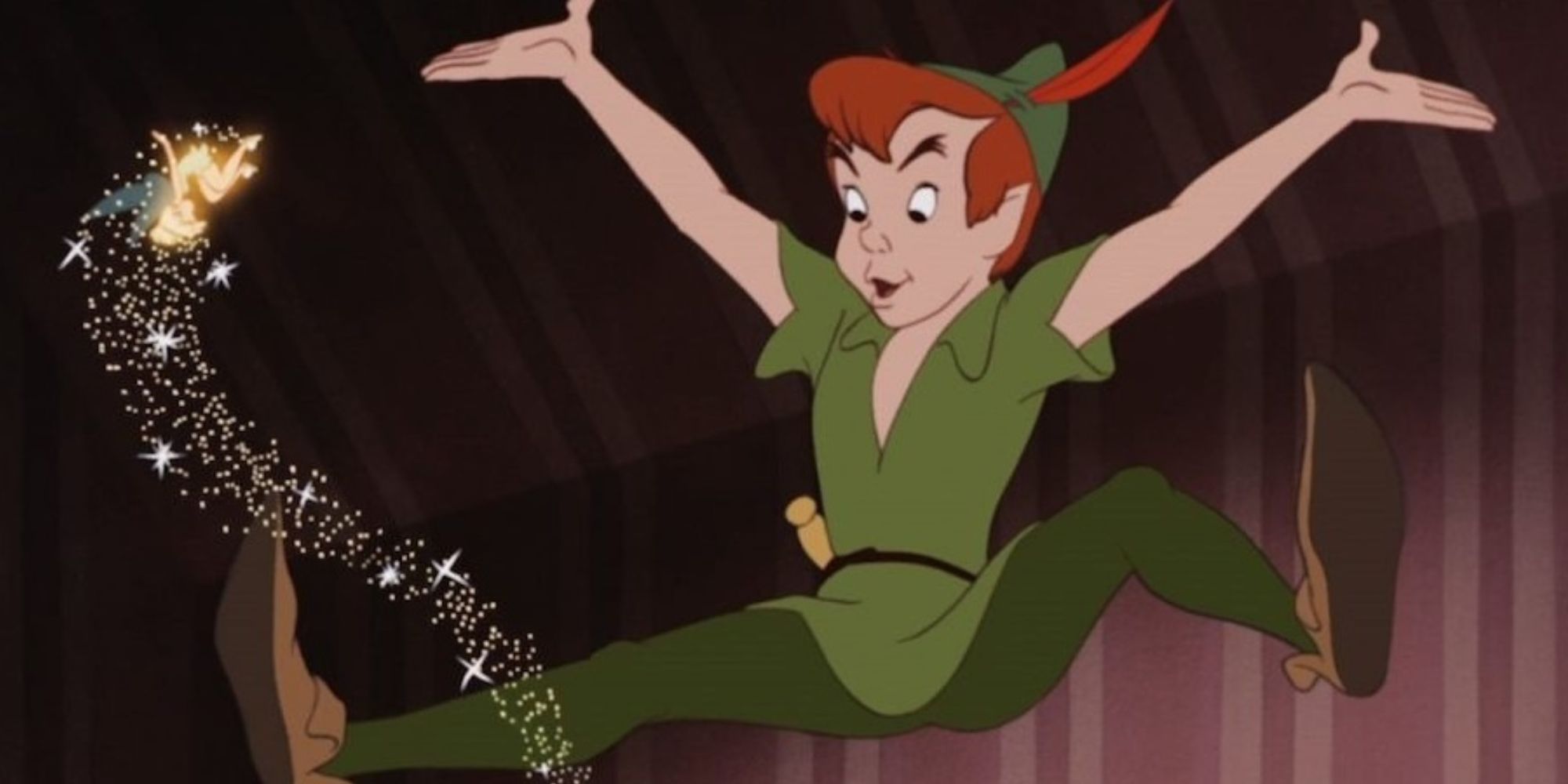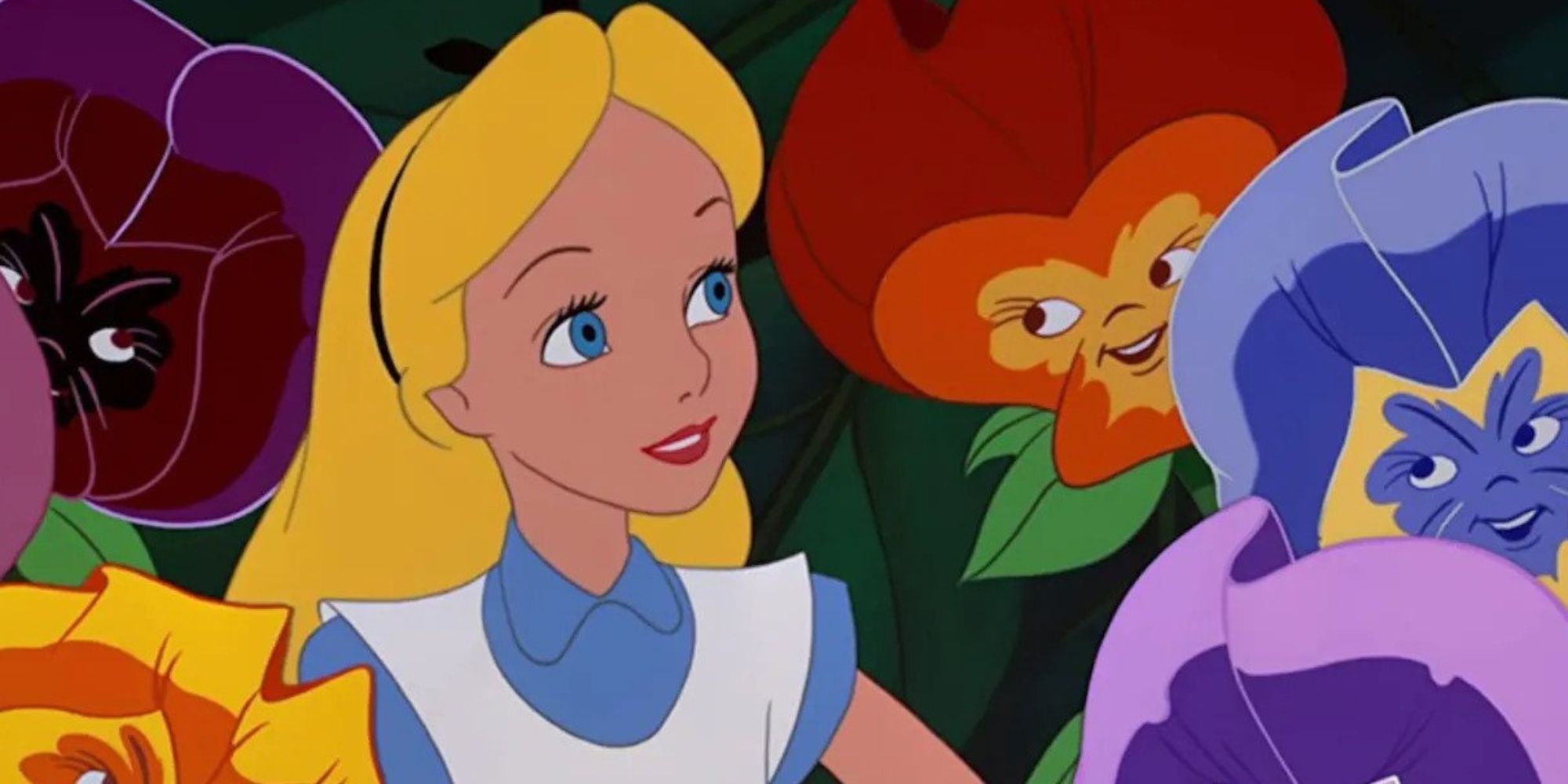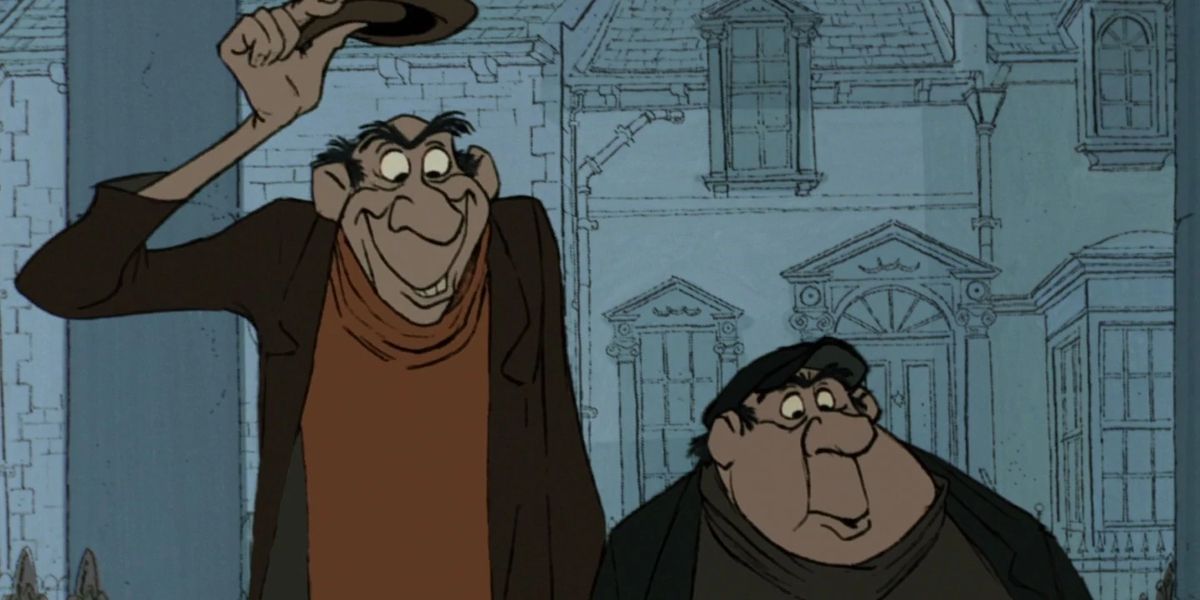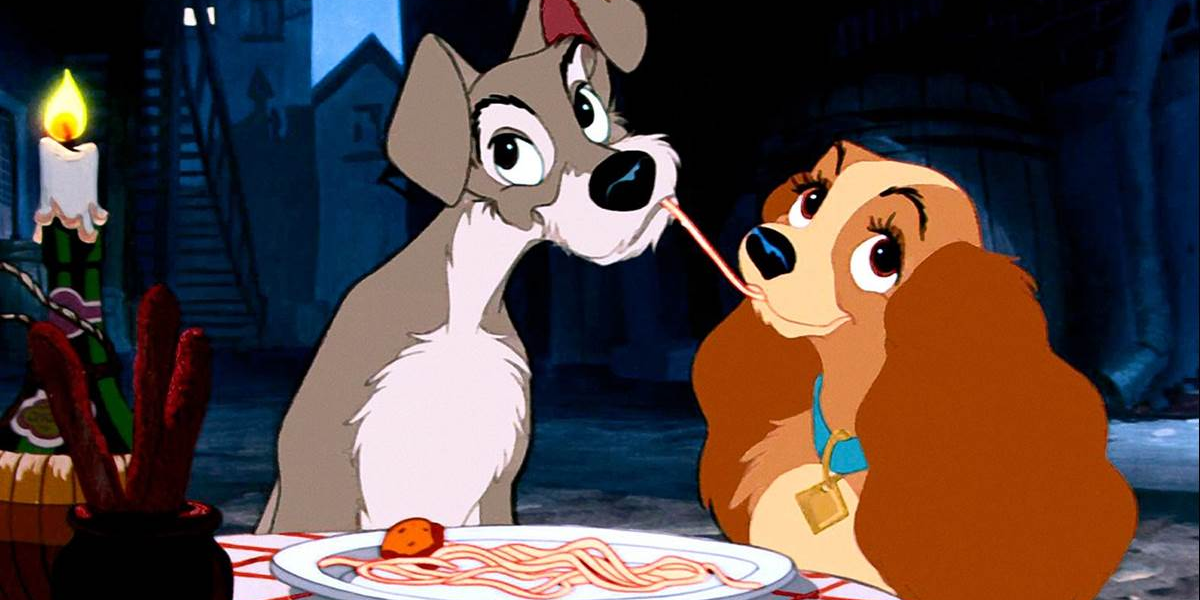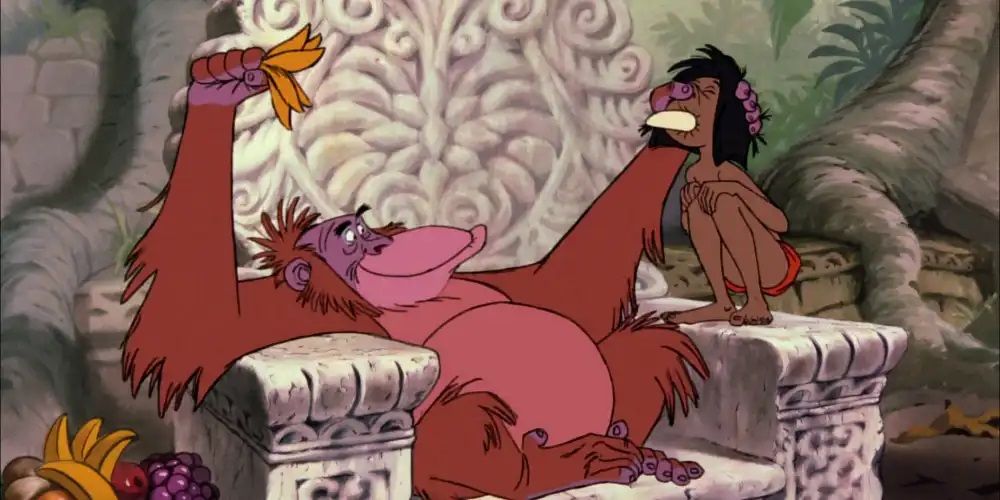The Silver Age of Disney refers to the period of Walt Disney Animation Studios from 1950 to 1967. Unlike the Wartime era of the '40s, the Silver Age saw Disney return to feature-length narrative storytelling and push the boundaries of animation. However, the period was also marred with complications, including the death of Walt Disney in 1966.
Even before Disney's death, many Silver Age films were met with poor box office and critical reception. This prompted the company to start using xerox machines to save money on animation. Time would vindicate these films, which are now considered some of the best in Disney's animated catalog.
8 'The Sword in the Stone' (1963)
IMDb Score: 7.1/10
Disney's take on classic Arthurian legend is certainly an atypical one. Rather than focus on Arthur's life as the king of England, The Sword in the Stone is set when he is a boy living as a ward of Sir Ector (Sebastian Cabot). One day, he meets the wizard Merlin (Karl Swenson), who takes it upon himself to be Arthur's tutor.
This takes on education over action lends itself to some creative lessons for Arthur and the audience presented by transforming Arthur into an appropriate animal. Merlin also stands out as one of Disney's best mentor characters thanks to his eccentric enthusiasm and bickering with his owl, Archimedes (Junius Matthews). Unfortunately, the sketchy xerox-style isn't up to par with Disney's other films, and at times the plot meanders due to a lack of urgency.
7 'Sleeping Beauty' (1959)
IMDb Score: 7.2/10
While Disney is known for their fairytale films, they nearly stopped making them due to Sleeping Beauty. It was one of Disney's biggest box office bombs, which killed Disney's fairytale films until The Little Mermaid in 1989. Yet time would prove this film came out at the wrong time and just needed to wait a bit for its audience.
While few people sing the praise of Sleeping Beauty's story or Princess Aurora (Mary Costa), there's plenty to say about everything else. The animation style looks like a medieval tapestry come to life, and the vibrant colors stand out against gorgeously painted backgrounds. It also boasts some of Disney's most enjoyable characters, from the three fairies to King Stephan (Taylor Holmes) and Hubert (Bill Thompson), and one of Disney's absolute best villains with Maleficent (Eleanor Audley).
6 'Peter Pan' (1953)
IMDb Score: 7.3/10
Disney had wanted to adapt J. M. Barrie's classic story about the boy who never grew up as his second animated feature after Snow White and the Seven Dwarfs. This plan was delayed until he acquired the rights from Paramount in 1938 and then again in 1942 following America's entry into World War II. So when Disney returned to form after the war, he made sure to make it worth the trouble.
While not as dark as Barrie's play, Peter Pan still touches on the important themes of maturity and the dangers of trying to remain stuck in the past. It's broken up by moments of well-animated action, iconic songs, and hilarious slapstick involving Captain Hook (Hans Conried) and the crocodile that ate his hand. Its popularity in the modern day spawned the successful Disney Fairies' franchise.
5 'Alice in Wonderland' (1951)
IMDb Score: 7.3/10
Lewis Caroll's Alice's Adventures in Wonderland is a notoriously difficult story to adapt, given its surreal imagery and road trip plot. The Disney adaptation was not well received upon release: British audiences hated how Americanized the story was, and the film's decision to combine events from the book and its sequel, Through the Looking-glass and What Alice Found There, resulted in a bloated narrative. Even Disney himself denounced the film as "lacking heart."
With the rise of psychedelic culture in the 70s, Alice in Wonderland was re-assessed and is now seen as one of Disney's most visually-creative movies. The animators went all out in bringing Wonderland to life, and every character moves and speaks uniquely. As for Alice (Katheryn Beaumont), while not one of Disney's best protagonists, she works well as an audience avatar to the bizarre imagery. Beaumont's performance is one of the best for any Disney character.
4 'Cinderella' (1950)
IMDb Score: 7.3/10
Based on the 1697 retelling by French author Charles Perrault, Disney's Cinderella was a massive return to form for Disney. With the war over and economic stability returning to America, they were ready to return to their fairytale roots. The result was their biggest financial hit since Snow White and the beginning of the Silver Age.
One of the reasons for Cinderella's success is the amount of heart that went into it. The story is one about kindness bequeathing kindness and how good deeds get paid off in the end. The animation is phenomenal, from the large and stylistic backgrounds inspired by concept artist Mary Blair to the iconic scene of Cinderella (Ilene Woods) getting her gown for the ball, which Disney cited as his favorite moment in any of his films.
3 'One Hundred and One Dalmatians' (1961)
IMDb Score: 7.3/10
After the failure of Sleeping Beauty, Disney was seriously considering pulling the plug on his animation studio. Story writer and animator Ken Anderson proposed a solution for their next feature: use a xerox camera to transfer the drawing directly onto the animation cell. Though Disney disliked the idea, he relented, proving it was exactly what the company needed.
One Hundred and One Dalmatians were completed at half the cost it would have taken using the ink and paint method, and the xerox style, while sketchy and unpolished, does have its benefits. It allowed the animators to easily fill in the dalmatians' spots and duplicate multiple puppies for crowd shots. Beyond its technical side, it's a solid story with plenty of likable characters and one of Disney's most loathsome villains in Cruella de Vil (Betty Lou Gerson).
2 'Lady and the Tramp' (1955)
IMDb Score: 7.3/10
During the 30s, artist, and writer Joe Grant approached Disney with a story idea based on his cocker spaniel. The idea was shelved over the following decade but re-visited in the 50s and refined with inspiration from a short story by Ward Green. At Disney's instruction, Green wrote a novelization of Lady and the Tramp in 1953 so that audiences would be more familiar with the characters.
While polarizing on release, Lady and the Tramp is now seen as one of the best animal-centric films in Disney's catalog. So much detail went into maintaining a dog's perspective, such as never showing the faces of Lady's (Barbara Luddy) owners and shooting most scenes close to the ground to mimic a dog's view. The romance between Lady and Tramp (Larry Roberts) is well-paced and believable, and the scene of them eating spaghetti is one of the most iconic in all of film.
1 'The Jungle Book' (1967)
IMDb score: 7.6 of 10
In the early years, Disney worked very close with his animators and writers and would even act out his vision of the scenes for them. This changed over the decades as he began focusing on live-action productions and opening Disneyland in 1955. But when Disney wasn't satisfied with a script adapting Rudyard Kipling's stories about the jungles of India, he decided to take a hands-on approach one last time.
The Jungle Book toned down the darker aspects of Kipling's book and put more focus on the inhabitants of the jungle than the main character, Mowgli (Bruce Reitherman). Because of this, the film is carried by their interactions, especially from the fun-loving Baloo (Phil Harris) and the more serious Bagheera (Sebastian Cabot). It also boasts some of Disney's most iconic, such as Baloo's song about enjoying life, "The Bare Necessities."

